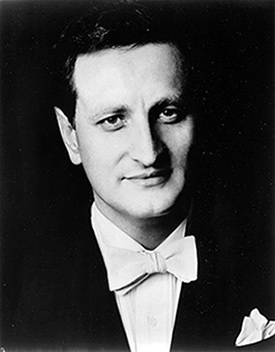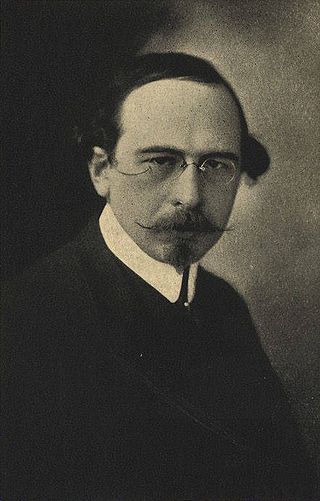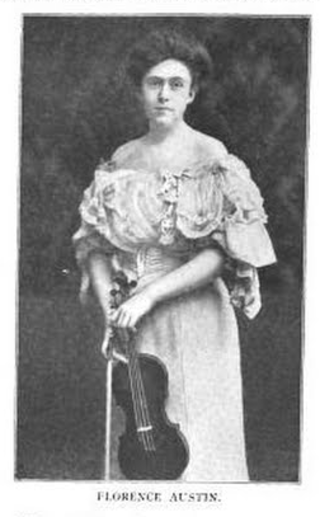Related Research Articles

Nicolas Slonimsky, born Nikolai Leonidovich Slonimskiy, was a Russian-born American musicologist, conductor, pianist, and composer. Best known for his writing and musical reference work, he wrote the Thesaurus of Scales and Melodic Patterns and the Lexicon of Musical Invective, and edited Baker's Biographical Dictionary of Musicians.

Eduardo Mata was a Mexican conductor and composer.

Harold Victor Bauer was an English-born pianist of Jewish heritage who began his musical career as a violinist.
Stanley John Sadie was an influential and prolific British musicologist, music critic, and editor. He was editor of the sixth edition of the Grove Dictionary of Music and Musicians (1980), which was published as the first edition of The New Grove Dictionary of Music and Musicians. Along with Thurston Dart, Nigel Fortune and Oliver Neighbour he was one of Britain's leading musicologists of the post-World War II generation.
Victor Nicholas Alessandro was an American orchestral conductor.
Theodore Baker was an American musicologist.
Barry Shelley Brook was an American musicologist.

E. Robert Schmitz was a Franco-American pianist, teacher, writer, editor, and organizer.
Mack Kendree Harrell, Jr. was an American operatic and concert baritone vocalist who was regarded as one of the greatest American-born lieder singers of his generation.
Adolf H. A. Weidig was an American composer who was born and raised in Hamburg. After extensive musical studies in Europe, including at the Academy of Music, Munich, he immigrated to the United States in 1892 as a young man.
Harry Newton Redman was an American composer, writer, and artist, born in Illinois. He wrote mainly chamber music, including two string quartets, and composed some songs. He was also active as a painter, and wrote a musical dictionary.

Heniot Lévy was an American composer, teacher, and pianist of Polish birth. A native of Warsaw, he trained at the Hochschule für Musik in Berlin with Oscar Raif and Karl Heinrich Barth, both pupils of Tausig; the latter also trained Arthur Rubinstein. Lévy made his debut touring with the Berlin Philharmonic in 1898. He came to the United States in 1905, settling in Chicago, Illinois. Lévy taught at the American Conservatory of Music; he toured and performed with the orchestras of Chicago and Minneapolis. As a composer he wrote mainly chamber music, and he recorded a handful of piano rolls, including some of his own work.

Julia Frances Smith was an American composer, pianist, and author on musicology.
David Park McAllester was an American ethnomusicologist and Professor of Anthropology and Music at Wesleyan University, where he taught from 1947–1986. He contributed to the development of the field of ethnomusicology through his studies of Navajo and Comanche musics, and he helped to establish the ethnomusicology department and the World Music Program at Wesleyan. His recordings of Navajo and Comanche music led to the establishment of the World Music Archives at the University.

Édouard Jacobs was a Belgian cellist. He was a pupil of Joseph Servais, at the Brussels Conservatory. He played in the Weimar court orchestra for some years. In 1885 he succeeded his teacher as cello professor at the Brussels Conservatory. He also played viol da gamba in concerts of early music. Among his pupils was Fernand Quinet.
Ernest Charles was an American composer of art songs.

Florence Austin was an American violinist.
Oscar Rasbach was an American pianist and composer and arranger of art songs and works for piano.
Richard John Dufallo was an American clarinetist, author, and conductor with a broad repertory. He is most known for his interpretations of contemporary music. During the 1970s, he directed contemporary music series at both Juilliard and the Aspen Music Festival, where he succeeded Darius Milhaud as artistic director of the Conference on Contemporary Music. He was influential at getting American works accepted in Europe, and gave the first European performances of works by Charles Ives, Carl Ruggles, Jacob Druckman, and Elliott Carter as well as younger composers like Robert Beaser. Dufallo, as conductor, also premiered numerous works by European composers, including Karlheinz Stockhausen, Sir Peter Maxwell Davies, and Krzystof Penderecki. He was a former assistant conductor of the New York Philharmonic, and worked closely with Leonard Bernstein from 1965 to 1975. He also served as associate conductor of the Buffalo Philharmonic.
Elizabeth Quaile was an American piano pedagogue of Irish birth.
References
- ↑ A Dictionary of Musical Terms, Theodore Baker (compiler & editor), G. Schirmer, Inc.
1st ed. (1895); LCCN 06-32762
2nd ed. (1896); OCLC 12925703
3rd ed. (1897); OCLC 2792172, 690499155
5th ed. (1901); OCLC 10973980 - 1 2 "Review of Baker's Biographical Dictionary of Musicians". The Musical Times. 82 (1182): 299–300. 1941. doi:10.2307/921436. hdl: 2027/hvd.32044040982001 . JSTOR 921436.
- ↑ Kozinn, Allan (December 27, 1995). "Nicolas Slonimsky, Author of Widely Used Reference Works on Music,Dies at 101". The New York Times. p. 6.
- ↑ Salter, Lionel (1979). "Baker's Half-Dozen". The Musical Times. 120 (1640): 825–826. doi:10.2307/962264. JSTOR 962264.
- ↑ "G. Schirmer is Sold," The New York Times , May 16, 1986
Works cited
- Bonna Jean Boettcher (March 2002). "Book Review: Baker's Biographical Dictionary of Musicians (Centennial ed.)". Notes . 58 (3): 544–547. doi:10.1353/not.2002.0008. OCLC 6733326894. S2CID 191576809.
- Scott Eyerly Kennedy, ed. (1999). "Biographical Sources" – "1398" (entry N°): "Baker's Biographical Dictionary of Musicians, 8th ed". Reference Sources for Small and Medium-Sized Libraries (6th ed.). ALA Editions. p. 218. ISBN 0-8389-3468-4. OCLC 940544179.
- "Music: Musical Super Sleuth". Time. 11 May 1959.